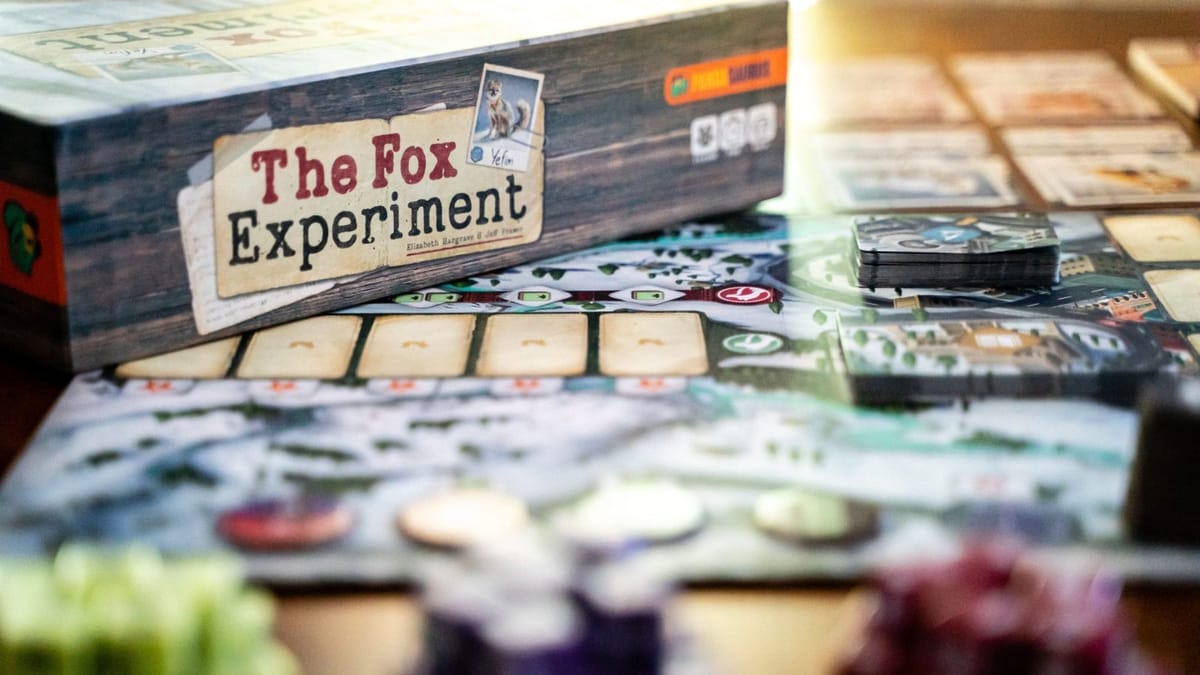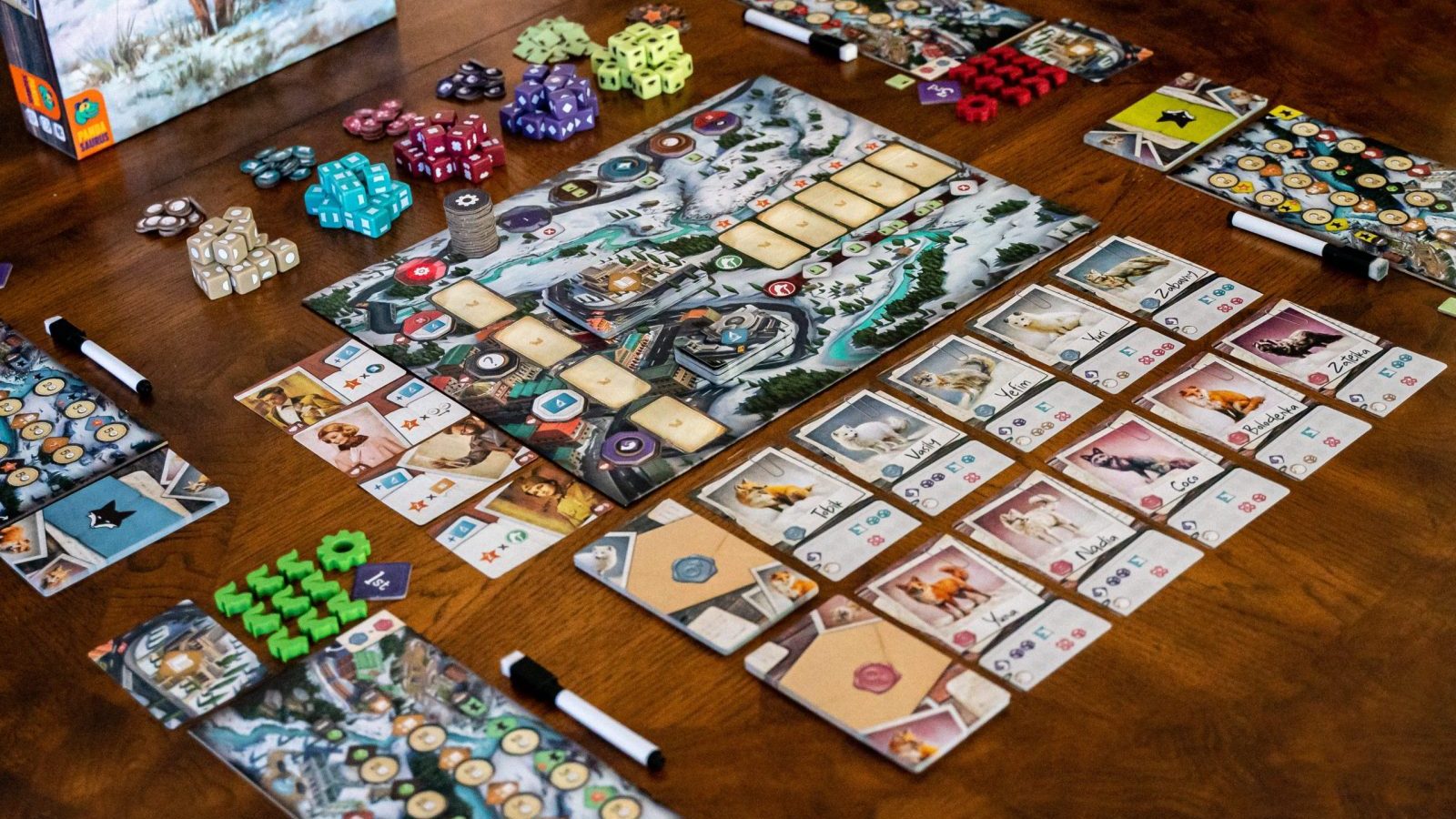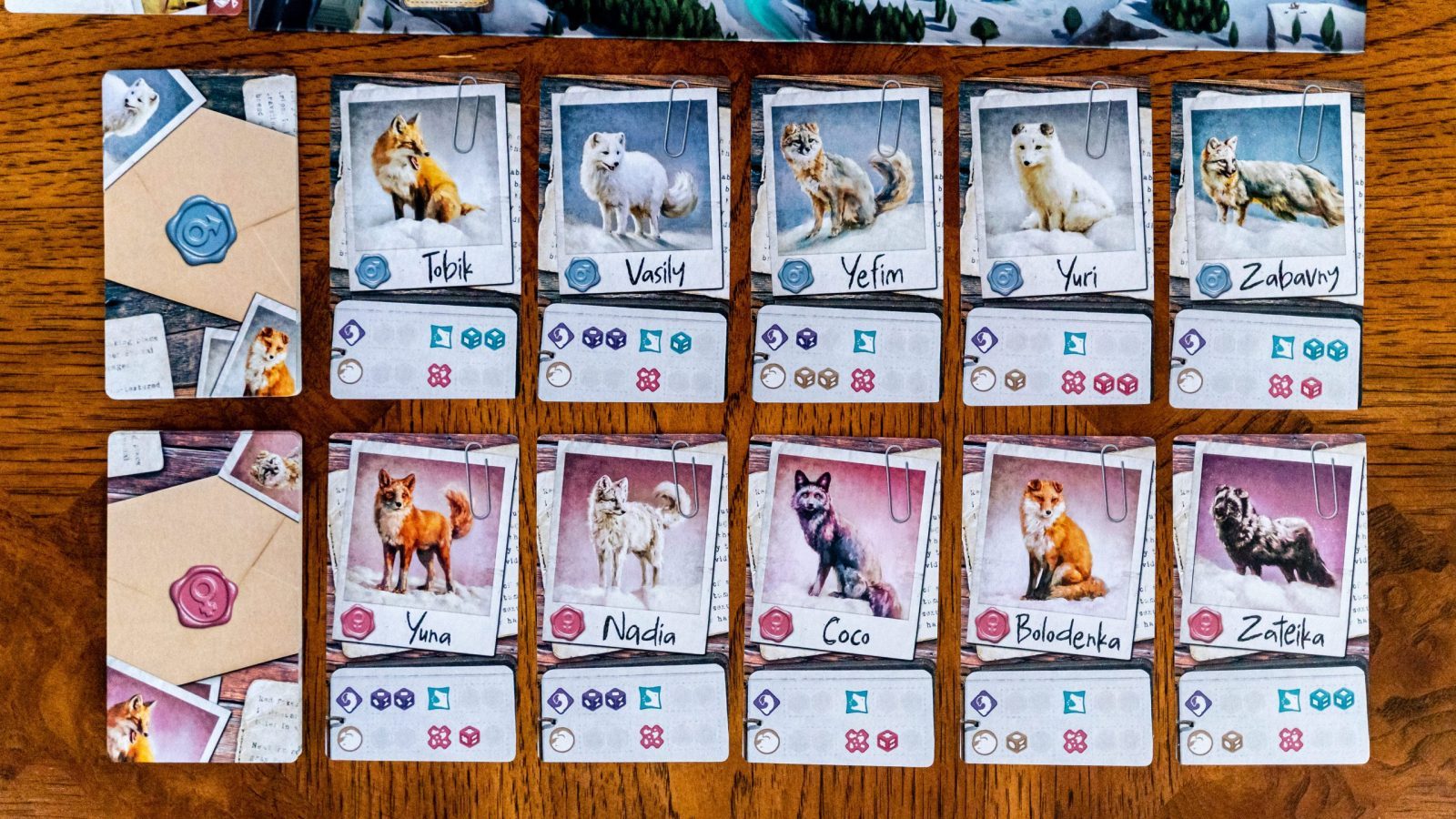
From Elizabeth Hargrave, the designer of the worldwide phenomena Wingspan, comes The Fox Experiment, a game where you will take the role of a scientist and breed your domesticated foxes.
Elizabeth Hargrave games, Tussie Mussie, Mariposas, and Wingspan, are widely regarded as examples of her talent as a game designer. The Fox Experiment is no exception to the rule based on what we have seen so far. Hargrave is trying to outdo herself, isn’t she?
The designer adapted The Fox Experiment from real-life events. Based on the Belyaev-Trut Experiment in Novosibirsk, Siberia, worldwide scientists attempted to domesticate wild foxes by allowing them to interact with people and then selected the ones who responded well to breeding.
In The Fox Experiment, you select fox parents and breed puppies that combine the best traits that foxes will start to display during the experiment. New breeds will begin showing wagging their tails, barking and whimpering in response to their owners; their ears may stay floppy as they age, and spots may appear. Foxes will become friendlier with each new breed. Progress your research and studies making discoveries, earning prestige and gaining the attention of patrons. During five generations, your pups will grow to become parents themselves, and the experiment will progress with the aim of breeding foxes domesticated as other animals are.
Some minor notes are worth mentioning. This game was played and previewed online. The final game rules are still not ready and may undergo minor changes before the game is released. The final components may differ from the “virtual” components.
Gameplay – Selection, breeding, research and administration

Gameplay
The game has five rounds. Each round has four phases: Selection, Breeding, Research and Administration. Score the most points by the end of the game to claim victory. Breed the friendliest foxes, complete the most studies and attract patrons to make points.
Players select parent foxes in the Selection Phase. The Breeding Phase involves rolling dice representing DNA trait sequences to breed new pups. Players use their new pups’ emerging traits to complete studies, gain upgrades, and attract patrons. The Administration Phase involves assessing puppies’ friendliness and placing them in kennels, where players select them as new parents.
The Selection Phase is a Turn-Based Card-Drafting phase to select parents to breed. You aim to gain points for fox puppy friendliness, but they will also develop traits of domesticated animals, like spots, floppy ears, barking, and curly tails. These traits may give you trait tokens you can use to unlock upgrades or gain points at the end of the games. Traits are also essential to complete Studies during the research phase. All players participate simultaneously in the Research phase; Complete studies with pups, earn trait tokens based on your pups’ attributes and upgrade your player board with the trait tokens obtained. During the Administration phase, you prepare for the next round.
The game ends at the end of the fifth round. Players score points for Studies, Patrons, Upgrades, Friendliness, and remaining supplies. The player who scores the most points at the end of the game wins.
Preview – combining diverse game mechanics into an engaging game

Fox Cards
The Fox Experiment does an incredible job of mixing different game mechanics into a very original game that may remind you of aspects from other games but that is ultimately unique. The game borrows elements from write and roll, card drafting (for acquiring resources on the supplies track), pattern recognition, work placement, push your luck, and a mix of turn-based phases with simultaneous phases when everyone plays concurrently.
The gameplay involves four phases that ensure the right pace and avoids repetitiveness. There is something delightful about playing each phase, like playing a mini-game within the main game. The flow from one phase to the other feels natural and specially designed. Overall, a full round feels solid and consistent; every design decision is logical and justified.
Combining the DNA of two-parent foxes to produce unique puppy breeds with the traits you had hoped for and managed to achieve is rewarding. In your role as a scientist, every pup you create feels like the result of a careful selection of parents and a thoughtful combination of DNA sequences. As a brilliant design, rolling “trait dice” from the parent foxes, which players can arrange in different ways to produce puppies with desired DNA systems, is such a clever idea.
The game plays much like a Eurogame, with each player owning its upgrades player Board, blank fox deck, study cards, science cards, and dice supply. Each player has its objectives to fill and may decide to make individual strategic choices and priorities over the other players. One would expect that player interaction would not be a substantial attribute of The Fox Experiment. Instead, players discuss their decisions and “friendly” compete with each other from beginning to end. You may select other players’ grown puppies for breeding, make decisions regarding claiming your position on the supply track, “work placement” of fox meeples on the patron track, and compete to breed the friendliest puppy. All these decisions may impact the other players in negative or positive ways.
This game plays better with three or more players because the number of options and decisions throughout the game is quite reduced in a two-player game. The special two-player mode may be an alternative and solution to this issue, but we cannot evaluate it on the current online game version.
Even though the game is not exactly complex, the game learning curve may be slightly steep (the rulebook is long and full of details). The Fox Experiment may not be the best gateway game for board game newbies, even though it is highly compelling and intriguing. However, once you grasp the rules of the game, it is not a convoluted game nor a slow game to play. Play a few rounds, and everything suddenly becomes straightforward and natural.
This article evaluates artwork and components based on the Kickstarter campaign and the online demonstration version of the game. The game artwork is an unquestionable work of art. These foxes are gorgeous, such as everything else in the game and its consistent design, including the box, the illustration of foxes, fox meeples, game boards, supplies, and game cards. From everything we have seen so far, both the Kickstarter and the retail versions of this game will be of top quality, making this a premium title.
Final thoughts
This article was prepared during online game sessions using a prototype demonstration, which is undoubtedly not the best way of playing this game. However, it made clear that this game will definitely shine and show its full potential when played with the actual gameboard and components and with all players sitting around a table chatting, cheering, and competing.
Based on online trials, our opinion is that this game will repeat or surpass the success of its predecessors (like Wingspan and Mariposas). I fell in love with this game at first sight, the online game sessions met our expectations, and I can’t wait to get it once it is released. It is probably in the top three games I have played this year (ignoring the minor annoyances of online play), if not the best. The Fox Experiment is a must-have board game, it will deserve the best score possible when released, and you should be looking forward to having this board game on your tabletop, when released in July 2023. With that, We will be biting our nails in anticipation of the new Elizabeth Hargrave work of art: The Fox Experiment!!!